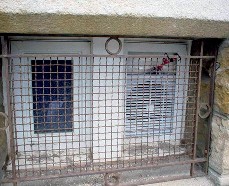Radon - remediation measures for existing buildings Properties, occurrence and effect of radon
Properties and occurrence
Radon is a naturally occurring radioactive noble gas that is colorless, odorless and tasteless. It is a decay product of the radioactive heavy metal uranium found in soils and rocks. Radon escapes from soils and rocks into the soil air. With the soil air, it can enter the indoor air of buildings.
An initial indication of whether elevated radon concentrations can be expected in the indoor air of buildings can be obtained from the national radon maps. Only a measurement can give certainty about the radon concentration in the respective building.
Detailed information on radon can be found on the country-specific websites. These addresses are listed on the back of this brochure.
Note: National specifications or recommendations may differ from the present contents!
Annual mean radon concentrations normally range from 50 to 500 becquerels per cubic meter of air. However, values up to several 1,000 Bq/m³ can also be reached - especially in radon areas.

Effect on health
After smoking (about 85%), radon and its decay products are a leading cause (5 to 10%) of lung cancer. In people who have never smoked, radon is the most common cause of this type of cancer. Radon and smoking reinforce each other in their harmful effects on human health. Most of the radon inhaled through the air is exhaled again. The greatest health risk is therefore not posed by the radioactive noble gas radon itself, but by its short-lived decay products (radioactive heavy metals).
The free decay products present in the indoor air attach themselves to airborne suspended particles (aerosols). When breathing, the aerosols with the attached radon decay products are deposited in the lungs. From there, they emit ionizing radiation that can damage the immediately surrounding lung tissue and ultimately cause lung cancer.
Reference values and threshold values
The following table shows the current reference values and thresholds for annual mean radon concentrations in homes or workplaces of the different countries.
| Country/Region | Reference values for existing buildings | Reference values for new buildings | Threshold values |
| Germany | 300 Bq/m3 | 300 Bq/m3 | - |
| Austria | 300 Bq/m3 | 300 Bq/m3 | - |
| Switzerland | 300 Bq/m3 | 300 Bq/m3 | *1,000 Bq/m3 |
| South Tyrol | 300 Bq/m3 | **200 Bq/m3 | - |
* for workplaces
** for living quarters as of 31.12.2024

Composition of the subsoil
In addition to the composition of soil and rock (uranium, radium content), the grain size of the rock (release of radon to the soil air) and the permeability of the subsoil (onward transport of the radon-containing soil air) play an important role. Special caution is required for rubble cones and slopes, weathered granite, karst and gravel soils (high radon availability due to good permeability) - in contrast to very compact or clayey soils.

Building condition
The permeability of a building to soil air in the foundation area as well as in walls in contact with the ground is decisive. Possibilities of penetration exist, for example, through cracks and crevices as well as along cable and pipe penetrations. The radon-containing soil air is sucked into the building by a negative pressure created in the building (chimney effect due to temperature differences between room and outside air or due to wind pressure). If cellars or other building areas with ground contact are open to floors above, radon can spread upwards particularly easily.

Air exchange in the building
The exchange between indoor air and outdoor air has a significant influence on the level of indoor radon concentration. Leaky windows and doors lead to higher air exchange rates. If, on the other hand, the air exchange rate is reduced, for example by installing tightly closing windows and doors, the radon concentration in indoor spaces can increase considerably.
When is which renovation measure required?
The urgency and scope of the measures depend on the measured annual mean value of the radon concentration in living spaces and at workplaces. Its determination is explained in the brochure "Radon - Measurement and Evaluation".
The recommendations given represent a suggestion of the time frame in which optimization or remediation measures should be carried out if the annual mean value exceeds the reference value.
These recommendations may differ from national guidelines on the urgency and scope of measures to implement radon remediation (for example, for workplaces in specially designated areas or for special workplaces).
Annual mean:
Immediate measure - increased ventilation
Permanent natural ventilation of the cellar (open or tilted windows) reduces the radon concentration in the cellar and thus also in the living area. Attention must be paid to the possible risk of frost and mold growth.
In the living area, ventilation is carried out three to ten times a day for five minutes, depending on the annual mean value, or by airing before use. Outside the heating period, the windows should remain open as often as possible.
Immediate measure - change of use
In the future, the affected rooms will be used for other purposes with low residence times of people. In this way, the problem can be solved without redevelopment.
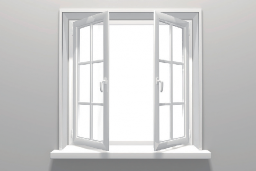
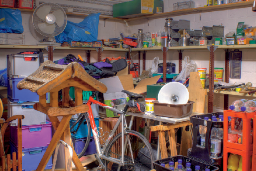
Remediation methods
The recommended techniques for the remediation of buildings with elevated radon concentrations are largely based on experience from radon programs in Switzerland, South Tyrol, Austria and Germany.
In many cases, the measures listed complement each other and make their combination expedient. Sealing measures alone are not sufficient.
Sealing between the basement, crawl space or cavities and the inhabited parts of the building
Sealing measures reduce radon spread from the unoccupied basement area into the living area.
Such measures are:
- self-closing airtight cellar doors (sealing in the base area - for example by means of a lowering seal, in the case of a bundle lock - replace with a cylinder lock or close) to the living area
- professional sealing of penetrations (e.g. pipes for water, electricity, heating) through the cellar ceiling
- waterproofing of installation ducts, elevator shafts and drop shafts (e.g. for laundry)
- waterproofing of basement rooms with natural floor to the inside (they should preferably be accessible only from the outside)
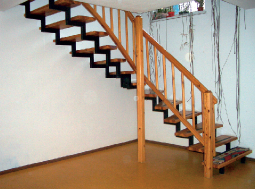
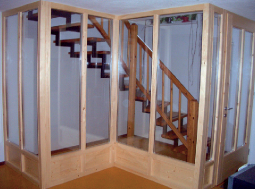
Closure of visible openings and cracks in the building components in contact with the ground.
Larger openings (penetrations, shafts, etc.) and cracks in the building components in contact with the ground (walls, masonry, floor slab) must be sealed. Shafts and penetrations with leaking covers can also represent an entry point.
Pressure equalization inside/outside
The radon-containing soil air is sucked into the building by a negative pressure developing in the building (chimney effect due to temperature differences between room air and outside air or due to wind pressure).
An opening to the outside, just above ground level reduces this negative pressure. Design examples: Outside air diffuser (ALD), air slot in window, core drilling through outside wall with grille.
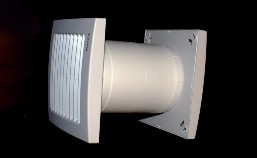
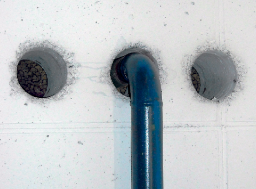
Negative pressure generation in basement or crawl space
A small fan is used to create a negative pressure in the basement or crawl space relative to the living area, thus reducing radon propagation from the basement into the living area. In order for a negative pressure to be created, the basement/crawlspace must be sealed from the living area and from the outside (closed windows and doors).
Facts and advice
- Radon is the second leading cause of lung cancer after smoking.
- Radon enters buildings from the ground through leaks.
- National radon maps are a first source of information.
- Certainty about the radon concentration in a particular building can only be obtained by measurement.
- There are simple and proven remediation measures.
- After completion of the remediation measures, a long-term measurement is recommended.
- Inspections of the remediation measures every five years or maintenance according to specifications are recommended.
Underfloor extraction
This measure is primarily used to create a negative pressure below the floor slab. This reduces convective radon ingress from the soil into the building.
Subfloor extraction can be used successfully wherever it is possible to build up a negative pressure. This can be achieved, for example, by a ballast bed directly under the floor slab.
Point extraction (radon wells)
Point extraction can be achieved by:
- the use of cavities (installation ducts, collector passages) with connection to the ground below the floor slab
- a core drilling through the floor slab (if gravel bed under floor slab)
- the excavation of a shaft (approx. 0.5 x 0.5 x 1 m)
In most cases, extraction in one place is sufficient (if possible in the center of the house and/or in a room with high radon concentration).
Area suction (radon drainage)
When the floor substructure is renewed, drainage pipes with a diameter of at least 8 cm are laid under the raw concrete in the gravel bed after excavation. The drainage system is laid in such a way as to ensure area-wide extraction. The exhaust pipe must be designed as a solid-wall pipe.
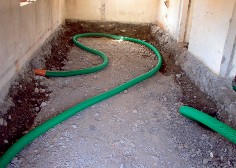
Installation of a radon drainage.
